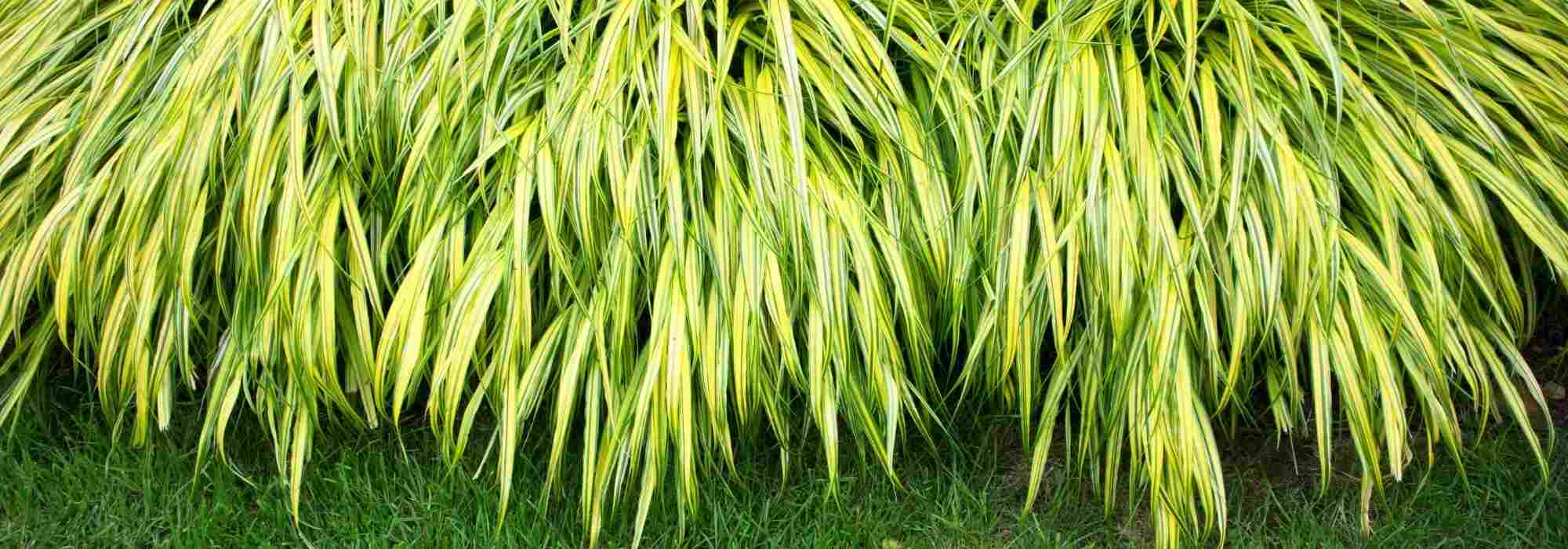
Slow-to-establish plants
When slowness rhymes with splendour!
Contents
One sometimes believes they have failed their plantings when certain plants do not provide the expected visual appeal the following year, despite having nurtured their establishment in the garden. This is not always due to the gardener’s skills, but sometimes to the plant that takes a certain time to establish its root system, develop, and offer the best of its foliage or flowering.
Apart from biennials that live on a two-year cycle, this is the case for several perennials and some grasses in particular. So, which plants take their time to look their best in your borders? Which plants require a bit more patience in the garden?
Let’s take a look at plants known for their delicate establishment, as it would be a real shame to condemn them without knowing their little Achilles’ heel!
Thalictrum
Thalictrums, also commonly known as Meadow rue, are beautiful perennials well-known for taking their time to fully bloom. You really need to be patient for these semi-shade plants to display their full potential, as they become truly interesting after 3 years. After this period, you will see a cloud of delicate, airy flowers, either white or mauve depending on the variety, borne atop tall stems (some, like ‘Elin’, grow to over 2 m!). The foliage of the Meadow rues also becomes denser, featuring finely dissected, green to glaucous leaves that resemble those of columbines. As long as you take good care of their planting, you won’t have any issues with these hardy perennials, perfect for the back of borders in natural and romantic gardens!
→ Learn more in our guide Thalictrum: planting, growinng, and companions
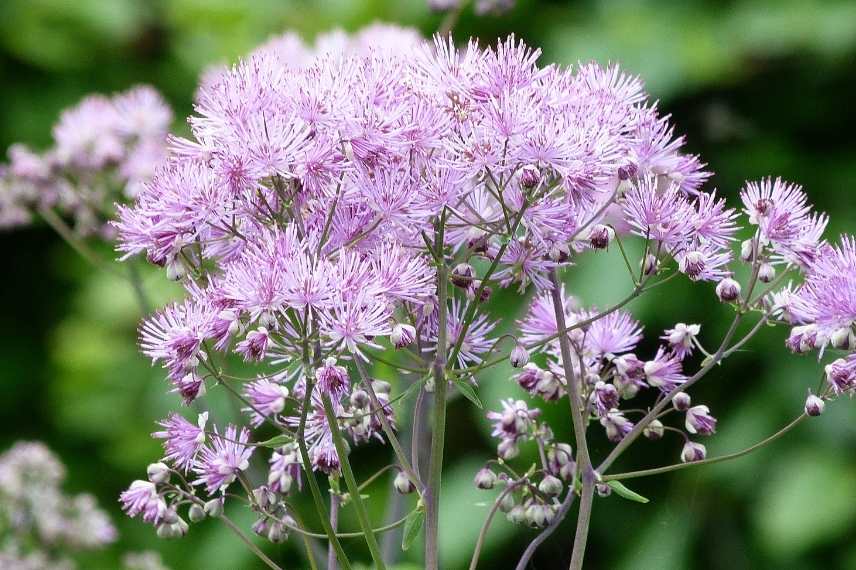 Meadow rue</caption]
Meadow rue</caption]
Pachysandra terminalis
Some groundcovers can be a bit frustrating, as they take longer to cover an area than we hoped (that is to say… quickly, to spare us the chore of weeding…) a flowerbed or rockery. This is the case with Pachysandra terminalis, which promises a lot on paper but proves to be a bit lazy in its spread.
Yet this beautiful evergreen groundcover has everything going for it: a superb glossy foliage, a very recognisable and lovely leaf shape with a dentate margin, a deep green colour with lighter veins delicately highlighting the lamina, and a small, discreet cream flowering at the end of spring. Most importantly, it is appreciated for its ability to thrive in very shady to semi-shady areas, at the base of trees, in cool soil, and for the truly aesthetic appeal it brings to these woodland spaces.
So, if you have fallen under the spell of this stunning groundcover, arm yourself with a bit of patience (especially with the cultivar ‘Green Carpet’), and tell yourself that it is worth it, forming a remarkable undulating carpet… over the years.
→ Learn more in our article Pachysandra terminalis: planting, growing, care
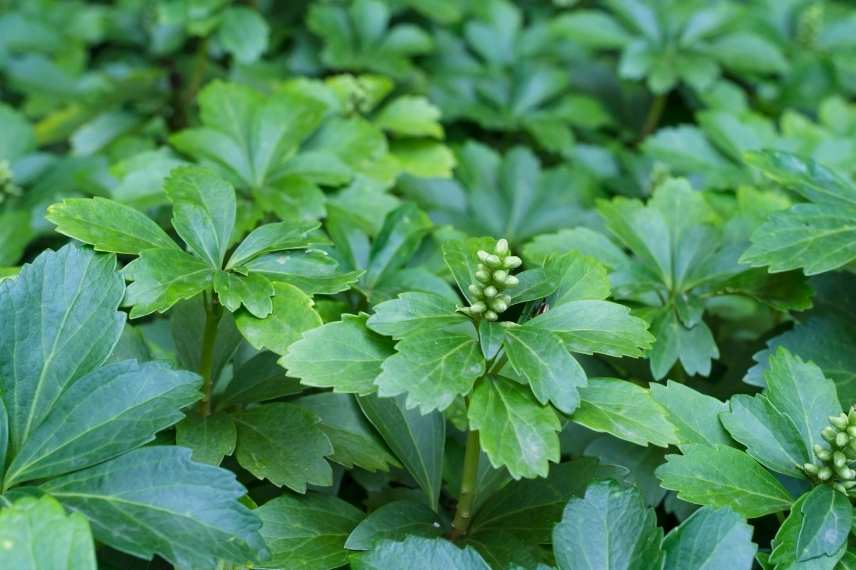
Pachysandra terminalis
Discover other Perennials
View all →Available in 1 sizes
Available in 0 sizes
Available in 1 sizes
Available in 1 sizes
Available in 2 sizes
Available in 1 sizes
Available in 1 sizes
Available in 1 sizes
Available in 1 sizes
Available in 1 sizes
Rodgersia
Large, crinkled, palmate leaves on Rodgersia aesculifolia or compound leaves on Rodgersia podophylla are certainly the most appealing features of this spectacular perennial, even though its summer flowering is not without interest.
Ideal for the edge of a water feature, Rodgersia also takes a few years to reveal itself as we had imagined. So don’t panic if you have planted this beautiful shade lover with the usual precautions, namely in soil that is necessarily cool, deep, well-drained, slightly acidic, and in the shade! If its leaves seem underdeveloped at first, everything improves after 3 years, while flowering can sometimes occur as early as 2 years. The Rodgersia is well worth the wait to enjoy its sculptural and almost exotic appearance!
→ Learn more about Rodgersia in our complete guide.
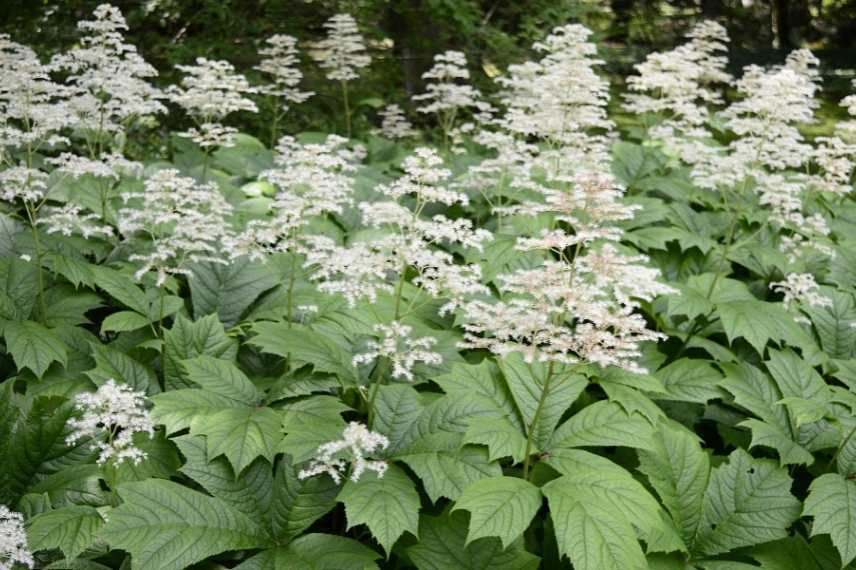
Rodgersias
Read also
Plants that don't like being movedLiriope
Here is another perennial that is appreciated for its evergreen character and its flowering in lovely clusters that occurs at the very end of summer and the beginning of autumn. It brings touches of mauve or violet to shaded beds and flowers a bit better with some sun. Liriope, from the lily family, is also one of those plants that is a bit slow to establish. So, do not plant them too closely if you are using them in a small border, as it will already develop well in terms of foliage from the second year, and offer a much more generous flowering from the third year.
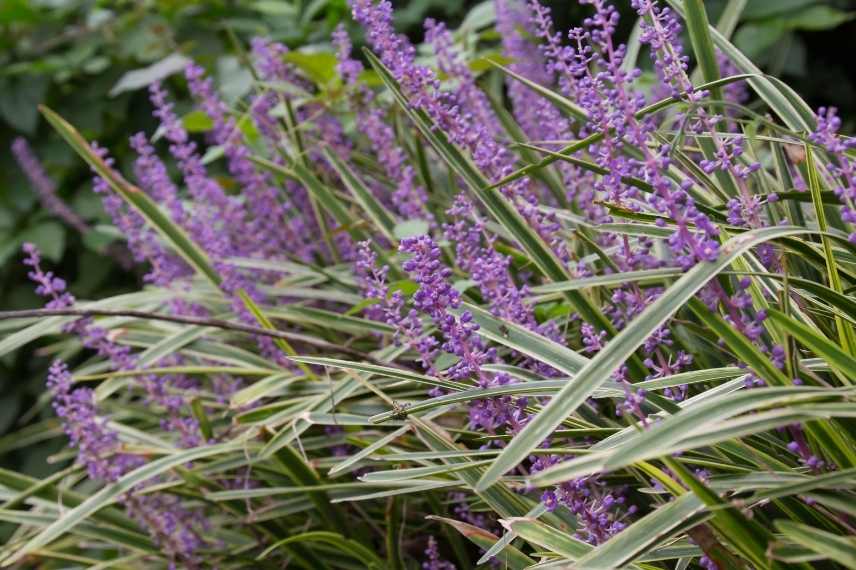
Liriope muscari
→ Learn more about Liriope: planting, growing, propagating.
Hakonechloa and Ophiopogon
Although not part of the same botanical family (the Hakonechloa with its anise green is a grass while the Ophiopogon, almost black, is a lily family member, like Liriope), we discuss them together here due to their often complementary use and their admirable colour contrast.
Both native to the Japanese mountains, these two perennials thrive in contemporary, Japanese, or natural gardens. You may have noticed them during a garden visit, but it’s important to know that Hakonechloa really takes its time to form a stunning clump: expect at least 4 years to achieve a beautiful cascading effect with its fine linear foliage. As for Ophiopogon, it is also a bit temperamental when establishing, first taking care, like the plants in this selection, to develop its root system before its aerial parts. It will form a lovely groundcover or a refined mass after a few years. Note that Hakonechloa will truly thrive in cool soil.

Hakonechloa macra above, and below Ophiopogon planiscapus ‘Nigrescens’
Japanese Anemones
What beautiful Japanese Anemones enchant the garden with their graceful presence at the end of summer! Perched on their sturdy stems, their white or pink flowers appear even more delicate. A little gem that remains floriferous for a long time in partially shaded areas. While they can eventually become invasive (their root system is formed of powerful rhizomes), it’s important to know that their spread won’t be as rapid as that. Under optimal planting conditions (soil, exposure, drainage), three years will be needed to achieve a generous flowering mass. Their establishment will be quicker if you plant your pots in spring!
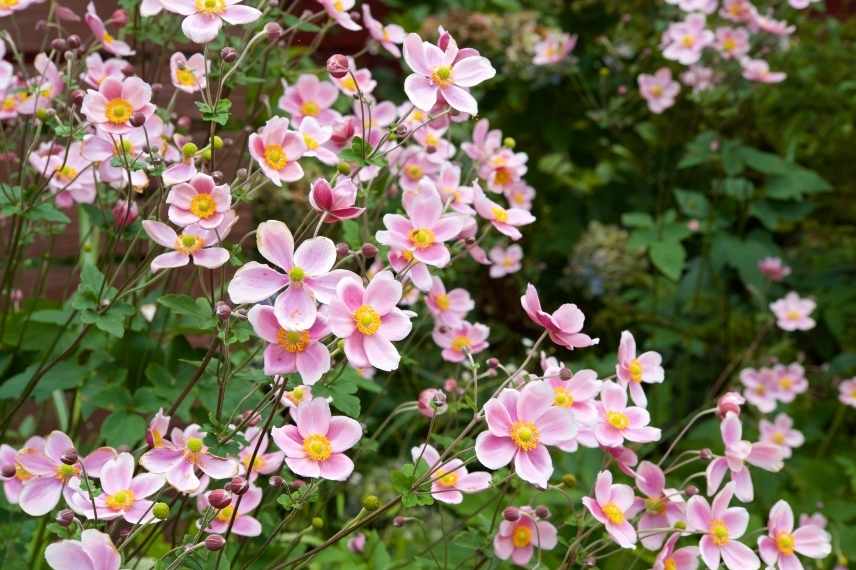
Japanese Anemones
Baptisias
Still relatively unknown, Baptisia, or false indigo, is a beautiful perennial that thrives in full sun, very hardy, with flowering spikes of indigo blue flowers, resembling sweet peas (it is a legume). New cultivars are available in shades from white to orange. It willingly integrates into large naturalistic beds and generous mixed borders.
Its deep rooting through a taproot is capricious and takes two years to establish properly. As it starts by developing its roots, it will only truly shine after this period… but like other plants in this selection, it compensates for this minor flaw with remarkable longevity.
→ Learn more in our complete guide: Baptisia or Indigo Lupin: sowing, planting and growing.
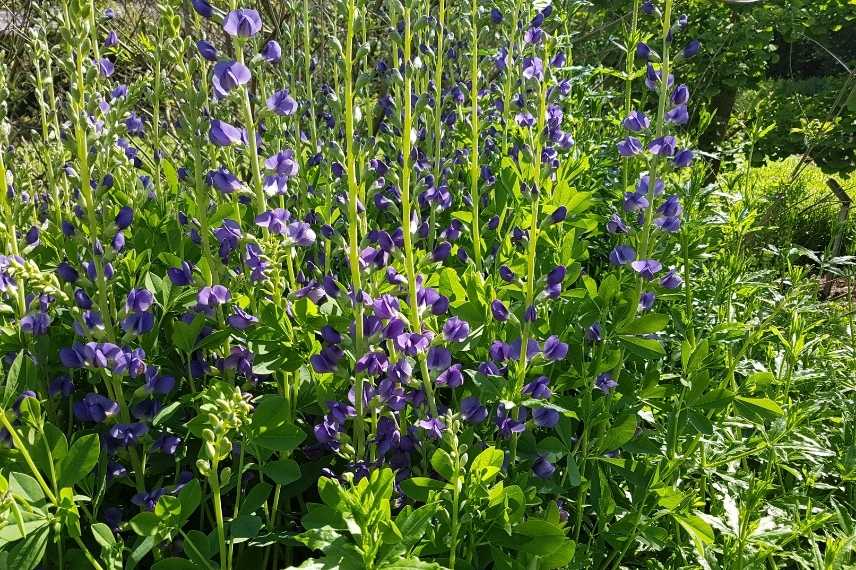
Baptisias
Iris foetidissima
In our humble opinion, the Stinking iris or Iris foetidissima is a perennial that is not yet present enough in our gardens: it boasts beautiful linear sword-shaped foliage, a delicately iridescent blue flowering with hints of yellow, and, most importantly, stunning orange fruit later in the season. This lovely Iris, unlike others, thrives in shade, even in dry shade, making it an excellent choice beneath tree canopies.
Is it its name, stinking Iris, or its slow establishment that causes many gardeners to overlook it? It is true that this iris takes its time after planting. This is due to its thick rootstock that needs to grow before producing more leaves and a discreet flowering. Again, exercise a bit of patience; if you have planted it in a suitable area for its development, it will prove to be quite useful and ornamental in mid-winter with its curious red fruits.
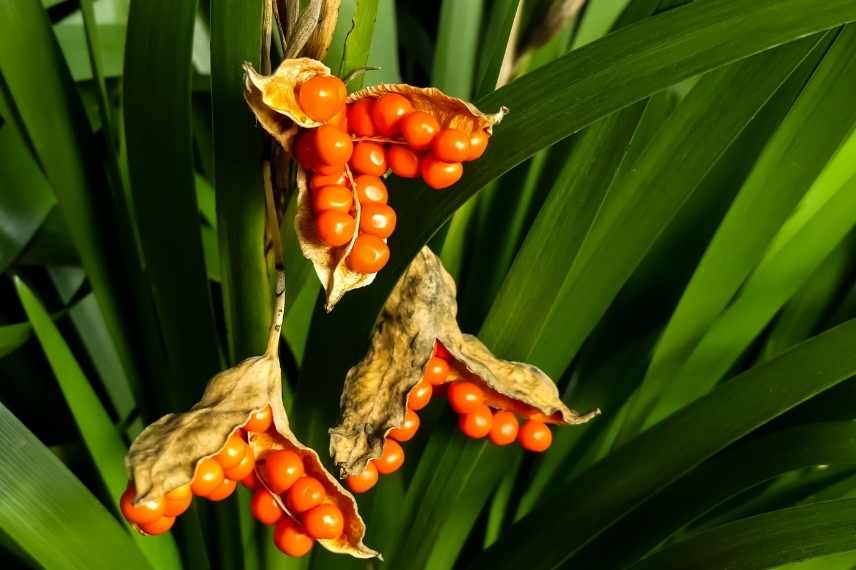
Stinking Iris
Hostas
If you have purchased Hostas, impressed by the enticing photos in magazines showing them opulent and magnificent in shady gardens, you may have been disappointed to find they are not as spectacular in your borders or pots. However, you certainly noticed at planting that they have very fleshy roots, true storage organs, which will need to settle in comfortably (you will be particularly careful with these roots when planting your pots). While they can flower in the first year after planting, the clumps of sumptuous, crinkled or striate leaves will gradually spread, forming a beautiful ensemble after about 3 years when you plant several side by side, in a border where ferns and Solomon’s Seal will accompany them.
Like the other perennials in this article, hostas are particularly robust and hardy, and it must be admitted, this is one of the qualities we can recognise in these somewhat capricious plants, but so rewarding with a bit of patience!
→ Learn all about hostas in our complete guide: Hosta, planting, growing and care.

Hostas
Echinaceas
The beautiful echinaceas are among the most stunning perennials with a long summer flowering period, vibrant with their dazzling colours, tall on their stiff stems, floriferous, and truly captivating in a country garden or even in a more sophisticated setting.
These lovely American plants are making a grand comeback in borders, and judging by the photos found in books and magazines, they seem to exhibit an unwavering generosity and floribundity… However, they too require several years to develop a sufficiently robust root system to provide a display worthy of an American meadow. Nevertheless, if you have planted them with the care they demand (in full sun, in well-drained and fertile, even dry soil), they will show their gratitude with an uninterrupted, generous, and wildly exuberant flowering!
→ Learn more with our complete guide: Echinaceas, sowing, growing and care.

Echinacea purpurea
But also...
Peonies, Solomon’s seals (Polygonatums), Epimediums, many ferns, and some Miscanthus…
- Subscribe!
- Contents
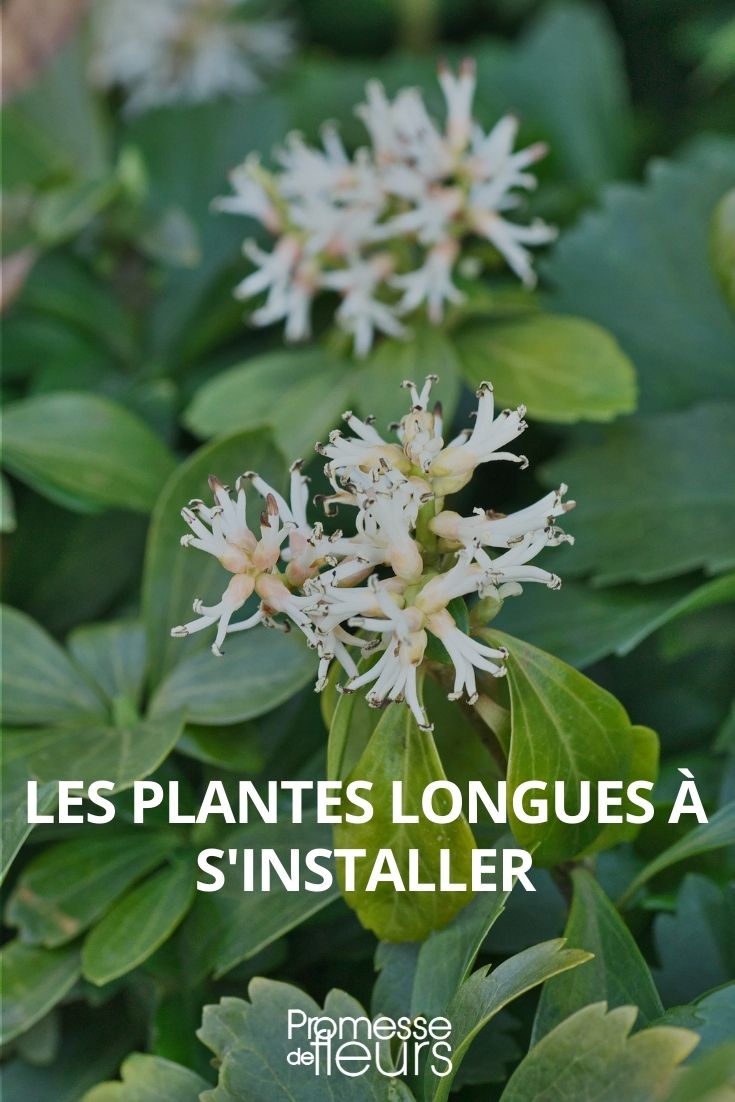































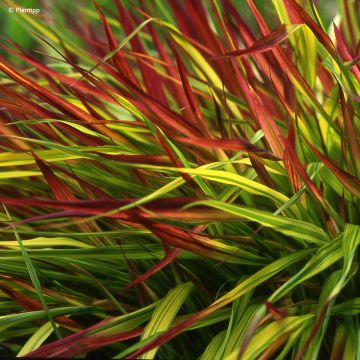


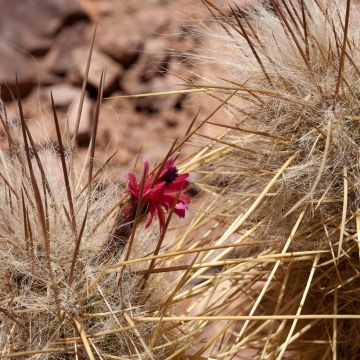

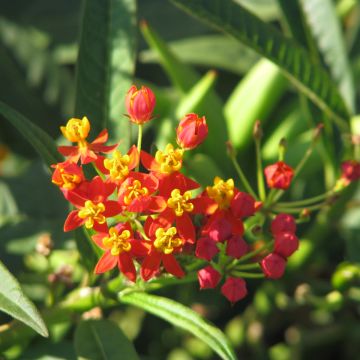

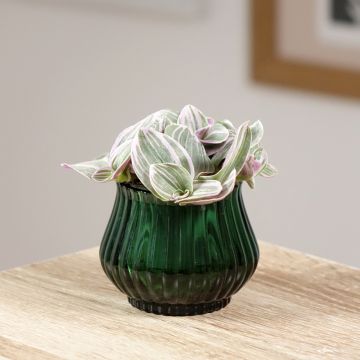
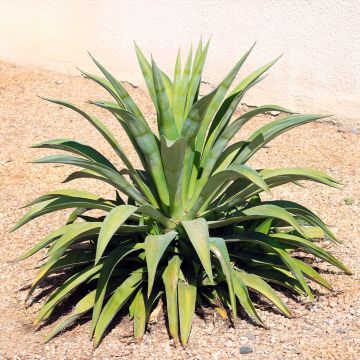
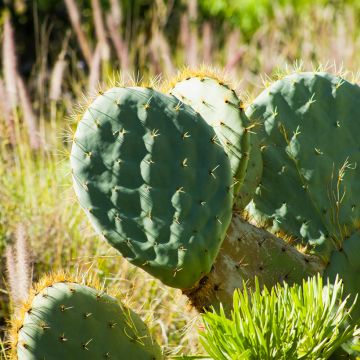
Comments